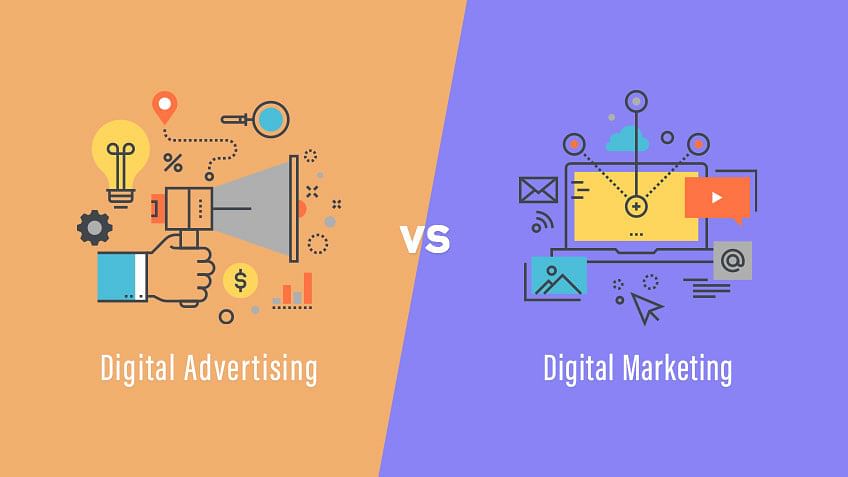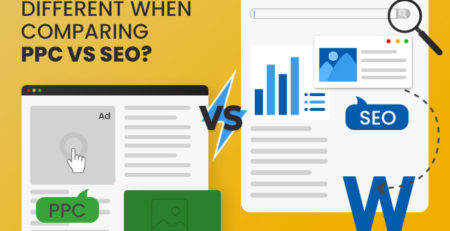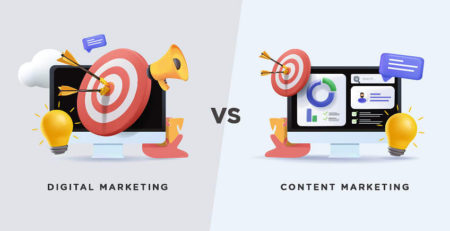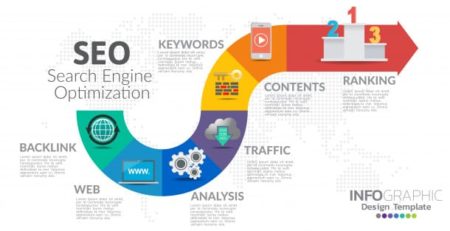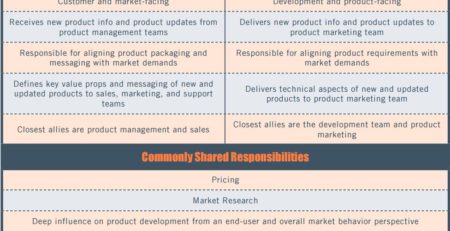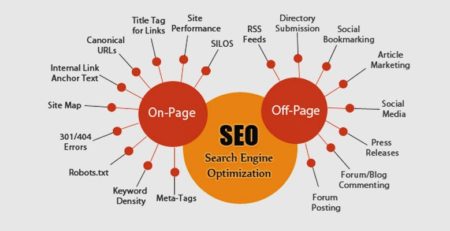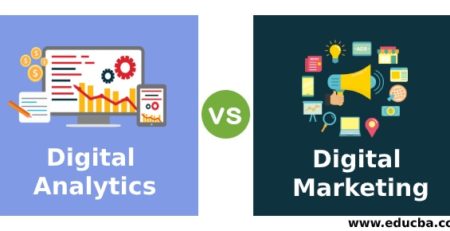Digital Marketing Vs Digital Advertising: What You Need To Know Before Buying?
Are you curious about the world of digital marketing and digital advertising? Well, you’ve come to the right place! In this article, we’ll explore the differences between these two important components of the online business world.
Digital marketing and digital advertising are often used interchangeably, but they are not exactly the same thing. Digital marketing encompasses a broad range of strategies and tactics used to promote products or services online. On the other hand, digital advertising specifically refers to paid advertisements displayed on digital platforms.
So why is it important to understand the distinction between digital marketing and digital advertising? Well, by knowing the difference, you can make informed decisions about which strategies to implement and how to allocate your resources effectively.
Now that we’ve laid the foundation, let’s dive deeper into the world of digital marketing versus digital advertising and explore the unique benefits and challenges of each approach. Get ready to uncover the secrets behind successful online promotion and discover which strategies might work best for your business goals. Let’s get started!
Key Takeaways: Digital Marketing Vs Digital Advertising
- Digital marketing involves various strategies to promote products or services online.
- Digital advertising refers specifically to paid advertisements displayed on digital platforms.
- Digital marketing focuses on building relationships and engaging with target audiences.
- Digital advertising aims to attract attention and drive immediate action from users.
- Both digital marketing and digital advertising play crucial roles in a comprehensive marketing strategy.
Comparing Digital Marketing Vs Digital Advertising
When it comes to promoting products and services in the digital realm, two key strategies come to mind: digital marketing and digital advertising. While the terms are often used interchangeably, they represent distinct approaches to reaching and engaging with target audiences online. In this article, we’ll delve into the nuances of digital marketing and digital advertising, exploring their key features, user experiences, pros and cons, price points, and ultimately, determine which strategy is better suited for your business goals.
Overview of Digital Marketing
Digital marketing encompasses a broad range of strategies and tactics aimed at promoting products or services using digital channels. It leverages various online platforms such as websites, social media, search engines, email, and content marketing to reach and engage with a target audience. Digital marketing strategies focus on building a strong online presence, driving organic traffic, and fostering meaningful customer relationships.
With digital marketing, businesses can create and distribute valuable and relevant content that attracts and retains customers. This content can take the form of blog posts, videos, infographics, and more, all intended to educate, entertain, and inspire the target audience. By providing valuable information and solving customer pain points, digital marketing aims to establish trust and position a brand as an authority in its industry.
One of the key strengths of digital marketing is its ability to execute highly targeted and personalized campaigns. By leveraging data and analytics, businesses can understand their audience’s preferences, behaviors, and demographics, allowing them to tailor their marketing efforts to specific segments. This level of personalization enhances customer experiences, increases engagement, and ultimately drives sales and conversions.
Overview of Digital Advertising
Digital advertising, on the other hand, focuses on using paid channels to deliver targeted promotional messages to a specific audience. It involves paid placements and advertisements across various digital platforms, including search engines, social media, display networks, and email marketing. Digital advertising aims to generate immediate results and drive traffic, leads, or conversions through strategic ad placements.
With digital advertising, businesses can create visually compelling and engaging ads that attract the attention of their target audience. These ads can take the form of text-based search ads, display banners, video ads, or sponsored content, depending on the platform and objectives. By leveraging the targeting options provided by the advertising platform, businesses can reach their desired audience based on demographics, interests, behavior, and location.
One of the key benefits of digital advertising is its ability to provide instant visibility and exposure. Unlike organic digital marketing efforts that may take time to build traction, digital advertising campaigns can deliver immediate results. By investing in digital advertising, businesses can ensure their brand and products are seen by potential customers at the right time and in the right context.
Key Features Compared: Digital Marketing Vs Digital Advertising
When comparing digital marketing and digital advertising, it’s essential to examine their key features to understand their differences and similarities. Let’s dive into the specific features and compare the two strategies:
Targeting
Both digital marketing and digital advertising enable businesses to target specific audiences. With digital marketing, this targeting is often achieved through content creation tailored to specific customer segments. This includes creating blog posts, social media content, and email campaigns that resonate with a particular audience’s interests and pain points.
On the other hand, digital advertising provides more granular targeting options by leveraging data and analytics. Advertisers can define their target audience based on demographics, behavior, interests, and even specific search terms. This level of targeting allows businesses to reach a highly specific audience and optimize their ad spend by ensuring their ads are seen by the most relevant viewers.
Cost
Another crucial consideration when comparing digital marketing and digital advertising is the cost. Digital marketing strategies typically focus on organic tactics, such as content creation and search engine optimization (SEO). While these tactics require time and effort, they are usually less expensive than paid advertising.
Digital advertising, on the other hand, requires a financial investment. The cost of digital advertising campaigns can vary depending on the platform, targeting options, ad formats, and competition. Businesses need to allocate a budget for their paid advertising efforts, considering the cost per click (CPC), cost per impression (CPM), or cost per acquisition (CPA).
Long-term vs. Short-term Results
Digital marketing tends to focus on long-term results and sustained growth. By consistently producing valuable content and building an online presence, businesses can establish trust and credibility with their target audience. However, it may take time to see significant results from digital marketing efforts, as organic growth and brand awareness require ongoing effort and patience.
On the other hand, digital advertising aims to deliver short-term results and immediate impact. With paid advertising campaigns, businesses can quickly generate traffic, leads, and conversions. Digital advertising is particularly effective for time-sensitive promotions, product launches, or events, where quick results are essential.
Brand Building and Engagement
Digital marketing places a strong emphasis on brand building and fostering engagement with the target audience. By creating valuable content, businesses can establish themselves as thought leaders and build a community around their brand. Digital marketing strategies aim to create meaningful connections with customers, fostering loyalty, and encouraging repeat business.
While digital advertising does not prioritize brand building to the same extent, it can still contribute to increasing brand visibility and awareness. By strategically placing ads across digital platforms, businesses can reach a wider audience and introduce their brand to potential customers. This can be particularly beneficial for businesses in highly competitive industries or new market entrants looking to establish themselves quickly.
Measurement and Analytics
Both digital marketing and digital advertising leverage measurement and analytics to evaluate performance and optimize strategies. However, the data and metrics used may differ between the two approaches.
Digital marketing often relies on organic metrics such as website traffic, page views, engagement rates, and conversion rates. By tracking these metrics, businesses can measure the effectiveness of their content and marketing efforts and make data-driven decisions to improve performance over time.
Digital advertising, on the other hand, provides more direct and immediate metrics, including click-through rates (CTR), conversion rates, cost per click (CPC), and return on ad spend (ROAS). Advertisers can access real-time data on how their campaigns are performing and make adjustments accordingly to optimize results.
User Experience
The user experience plays a crucial role in the success of both digital marketing and digital advertising. Let’s explore the user experience for each approach:
Digital Marketing User Experience
With digital marketing, the user experience is centered around quality content that is informative, engaging, and relevant to the target audience. Users typically discover digital marketing content through search engine results, social media posts, or email newsletters.
When users interact with digital marketing content, they expect value and relevance. If the content meets their needs and expectations, users are more likely to engage, share, and return for more information. Digital marketing aims to provide a seamless and enjoyable user experience by delivering content that addresses user pain points and offers solutions or insights.
Another aspect of the digital marketing user experience is the opportunity for two-way communication. Users can leave comments on blog posts, engage with social media posts, or respond to email newsletters, allowing for direct interaction between the brand and its audience.
Digital Advertising User Experience
With digital advertising, the user experience revolves around targeted ads that provide relevant offers or solutions. Users encounter digital ads while browsing websites, social media platforms, or search engine results.
When users interact with digital ads, they expect relevance, transparency, and non-intrusiveness. Ads that are well-designed, visually appealing, and contextually placed have a higher chance of capturing users’ attention and generating engagement. Digital advertising aims to provide a positive user experience by delivering ads that align with the user’s interests and intent.
Unlike digital marketing, digital advertising typically does not offer the same level of two-way communication. Users may have limited options to engage or interact with the brand directly from the ad, but they can choose to click on the ad to learn more or take a desired action.
Pros and Cons: Digital Marketing Vs Digital Advertising
Let’s explore the advantages and disadvantages of both digital marketing and digital advertising:
Pros and Cons of Digital Marketing:
Pros:
- Cost-effective compared to paid advertising
- Builds long-term brand presence and credibility
- Allows for personalized and targeted messaging
Cons:
- Results may take time to materialize
- Requires ongoing effort and commitment
- May require technical knowledge for effective implementation
Pros and Cons of Digital Advertising:
Pros:
- Provides immediate visibility and results
- Offers precise targeting options for maximum ROI
- Can generate fast traffic, leads, and conversions
Cons:
- Requires financial investment
- Results may not be sustainable without ongoing advertising
- Ad-blocking software can limit reach and impact
Price Comparison
When comparing the price points of digital marketing and digital advertising, it’s essential to consider the various costs associated with each strategy:
Digital Marketing Costs
The costs of digital marketing primarily revolve around content creation and distribution. While businesses may opt to handle content creation in-house, they may need to invest in tools, software, or agencies to assist with content strategy, keyword research, search engine optimization, and analytics tracking.
Additional costs may arise from paid promotion of content through social media advertising or sponsored content placements. However, these costs are generally lower compared to paid advertising campaigns.
Digital Advertising Costs
Digital advertising costs can vary significantly depending on the platform, targeting options, ad formats, competition, and objectives. The cost is typically based on a bidding system, with advertisers competing for ad placements based on their budget and desired audience.
Businesses need to consider the cost per click (CPC), cost per impression (CPM), or cost per acquisition (CPA) when determining their digital advertising budget. It’s important to monitor and optimize campaigns regularly to ensure they deliver a satisfactory return on investment (ROI).
Comparison Table: Digital Marketing Vs Digital Advertising
| Feature | Digital Marketing | Digital Advertising |
|---|---|---|
| Targeting | Content-based targeting | Data-driven targeting |
| Cost | Lower cost compared to paid advertising | Requires a financial investment |
| Results | Long-term growth and organic traffic | Immediate visibility and quick results |
| Brand Building | Fosters engagement and community | Increases brand visibility and exposure |
| Measurement | Organic metrics and performance tracking | Real-time data and campaign analytics |
| User Experience | Value-driven content and two-way communication | Contextual and relevant ad placements |
Which is Better?
Both digital marketing and digital advertising offer unique advantages and can be effective strategies depending on the business goals and target audience. Ultimately, the decision on which strategy is better for your business depends on various factors, including budget, timeline, objectives, and resources.
3 Reasons to Choose Digital Marketing:
- Digital marketing allows for long-term brand building and sustained organic growth.
- It provides a cost-effective approach for businesses with limited advertising budgets.
- Digital marketing focuses on creating meaningful connections and fostering customer loyalty.
While digital marketing may not deliver immediate results, it offers the potential for long-term success, brand authority, and customer loyalty. Businesses that prioritize building a strong online presence, providing valuable content, and nurturing relationships with their customers can benefit greatly from digital marketing strategies.
3 Reasons to Choose Digital Advertising:
- Digital advertising provides immediate visibility and quick results.
- It offers precise targeting options, maximizing return on investment.
- Digital advertising can be highly effective for time-sensitive promotions or product launches.
Businesses looking for instant results, immediate traffic, and measurable outcomes can benefit from digital advertising. This approach is ideal for those with a larger advertising budget and specific goals that require quick visibility and results.
Ultimately, the choice between digital marketing and digital advertising depends on a business’s objectives, target audience, and available resources. In many cases, a combination of both strategies can yield the best results by leveraging the unique benefits of each approach.
Frequently Asked Questions
Digital marketing and digital advertising are both important aspects of online promotion, but they serve different purposes. Here are some commonly asked questions about the differences between the two.
1. What is the difference between digital marketing and digital advertising?
Digital marketing encompasses all online strategies used to promote a brand or product, including SEO, content marketing, social media marketing, email marketing, and more. It involves building a comprehensive online presence and engaging with the audience through various channels. On the other hand, digital advertising focuses specifically on paid advertisements, such as display ads, search engine marketing, social media ads, and video ads. It involves using targeted advertising campaigns to reach a specific audience and generate immediate results.
While digital marketing takes a broader approach, focusing on long-term brand building and customer engagement, digital advertising is more direct and results-oriented, aiming to drive immediate conversions or actions from the target audience.
2. Which is more cost-effective: digital marketing or digital advertising?
The cost-effectiveness of digital marketing and digital advertising depends on the specific goals and strategies used. Digital marketing, with its organic strategies like SEO and content marketing, can deliver long-term results at a lower cost compared to digital advertising. However, building a strong online presence through digital marketing requires time and consistency.
On the other hand, digital advertising offers more immediate results, but it involves a cost per click or cost per impression model. While digital advertising may require a higher investment upfront, the targeting options and ability to track ROI make it a cost-effective option for businesses looking for quick conversions or brand exposure.
3. Can digital marketing and digital advertising work together?
Yes, digital marketing and digital advertising can complement each other effectively. While digital advertising drives immediate visibility and traffic, digital marketing helps build a long-term relationship with the audience. For example, a paid ad campaign can drive traffic to a website, and once the visitors are there, digital marketing strategies like content marketing and email marketing can keep them engaged, nurture leads, and turn them into loyal customers.
By combining digital marketing and digital advertising, businesses can create a holistic approach to online promotion, leveraging the strengths of both strategies to reach and engage their target audience effectively.
4. How can I decide whether to focus more on digital marketing or digital advertising?
The decision between digital marketing and digital advertising depends on your business goals, target audience, and available resources. If you’re aiming for long-term brand building, improving organic search rankings, and engaging with a wide audience, digital marketing should be a primary focus.
If your goal is immediate results, targeting a specific audience segment, and driving conversions, digital advertising can be more effective. It’s important to evaluate your budget, timeline, and goals to determine the right balance between the two strategies for your business.
5. How can I measure the success of my digital marketing and digital advertising efforts?
Both digital marketing and digital advertising offer various metrics to measure success. In digital marketing, key performance indicators (KPIs) may include website traffic, conversion rates, engagement metrics, and search rankings. Tools like Google Analytics can help track these metrics and provide insights into the effectiveness of your digital marketing efforts.
In digital advertising, metrics such as click-through rates (CTRs), impression share, cost per acquisition (CPA), and return on ad spend (ROAS) can indicate the success of your campaigns. Advertising platforms like Google Ads and Facebook Ads provide detailed analytics to measure the performance of your digital advertising campaigns.
By regularly monitoring these metrics and analyzing the data, you can optimize your digital marketing and digital advertising strategies to achieve better results and maximize your ROI.
The Difference Between Digital Marketing and Traditional Advertising
Summary
So, let’s wrap up what we’ve learned about digital marketing and digital advertising. Digital marketing is like a big umbrella that includes different strategies to promote products or services online. It focuses on building relationships with customers and creating long-term engagement. On the other hand, digital advertising is like a smaller umbrella that specifically focuses on promoting products or services using paid ads online.
In digital marketing, our goal is to use various techniques like social media, search engine optimization, and content creation to attract, engage, and retain customers. We want them to develop trust in our brand and become loyal supporters. Digital advertising, on the other hand, uses methods like pay-per-click ads, display ads, or video ads to grab people’s attention and encourage them to take immediate action, like clicking on a link or making a purchase.
Both digital marketing and digital advertising are important because they help businesses reach their target audience and increase their online visibility. They have their own strengths and can be used together to achieve the best results. While digital marketing focuses on building relationships, digital advertising helps us market our products or services to a wider audience. By combining these strategies, businesses can build a strong online presence and drive more sales.
To sum it up, digital marketing is like a big strategy that includes different tactics to attract and engage customers over time. Digital advertising, on the other hand, is a smaller strategy that focuses on immediate promotion using paid ads. By using a combination of both, businesses can create a strong online presence and connect with their target audience in the best way possible. So, whether you want to build long-term relationships or get people interested right away, digital marketing and digital advertising have got you covered!

